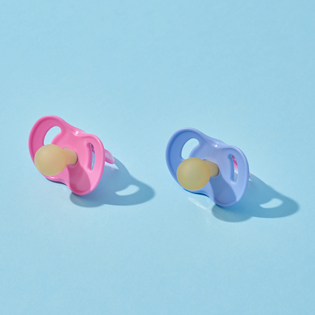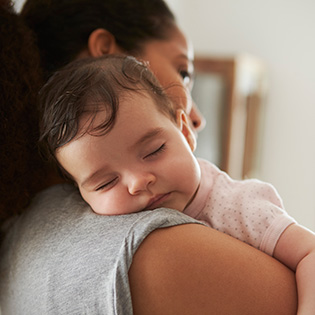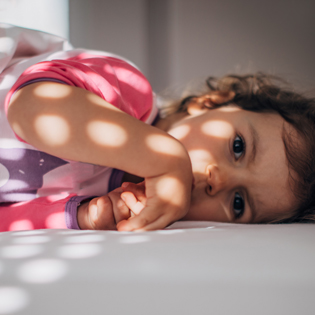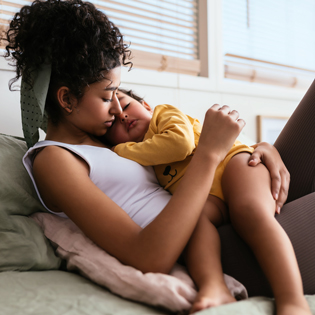Best Travel Cribs
What to Expect selects products based on real-life testing conducted by staff, contributors and members our user community, as well as independent research and expert feedback; learn more about our review process. Prices and details are accurate as of the published date. We may earn commissions from shopping links.
Family vacations often include a shift in routine: Maybe your baby meets new people, stays up a little later or, if she's already eating solids, tries a few new foods. But there is one thing that should never change: A safe place for snoozing. If you're planning to bring a lightweight, portable travel crib, bassinet or playard, you need to follow the guidelines for a safe sleeping space.
What is a travel crib?
A travel crib is a compact, lightweight sleep space that folds up for portability, yet is still sturdy enough to use on an everyday basis. With a portable crib or playard, you want to ensure it has fine mesh netting, a babyproof collapsing mechanism and removable fitted sheets, says Daniel Ganjian, M.D., a pediatrician at Providence Saint John’s Health Center in Santa Monica, California.
When using your travel crib, make sure to only use sheets recommended by the manufacturer. If you try to use a regular crib sheet on a smaller mattress, you could end up with too much loose fabric, which could be a major safety hazard. Keep it clear of everything except for a fitted sheet, such as bumpers, quilts and blankets. If you've been letting your little one play in his travel crib during the day, be sure to pull out any leftover toys and stuffed animals at bedtime.
And if your current travel crib is older, it’s likely time for an upgrade. “You want to use a travel crib that’s new-ish,” Dr. Ganjian says. “These things age, and you want nothing more than 10 years old.” Another tip, per Dr. Ganjian: Make sure you register your travel crib. “It’s important, just in case there is a recall,” he says. And of course, always follow the crib manufacturer’s instructions.
What to look for in a travel crib
The best portable cribs boast these features:
- A snug mattress. It’s important to make sure that the mattress goes all the way to the edge of the crib, so baby won’t get stuck in the sides, Dr. Ganjian says. You shouldn't be able to fit more than two fingers between the mattress and the crib's side. Also, make sure to only use the mattress pad provided — don’t add any extra cushioning.
- Meets current safety standards. Look for products that meet federal safety standards through the CPSC (U.S. Consumer Product Safety Commission) and/or the ASTM (American Society for Testing and Materials). It’s best to buy a new travel crib to ensure it’s up to the latest safety standards, rather than finding one secondhand. (If you need financial help getting a safe sleep space, you can contact your local Social Services agency, who can help connect you to an organization that provides low-cost or free sleep spaces.)
- Comes with a sturdy bag. Your travel crib should come with a bag that can withstand the rigors of air travel if you plan to check it. (There are cribs on our list that are small enough to be put in a plane's overhead bin or even your suitcase, but others will need to be included with your checked luggage.)
- Portability. You’ll actually need to be able to heft this crib into and out of your trunk, and possibly even tote it through an airport. Check the crib’s weight and dimensions before purchasing to make sure you feel comfortable lugging all of that.
- The right age and weight range for your child. Every manufacturer and crib is different. You’ll want to make sure your child fits into the recommended age and weight range and will stay within it for the length of time you plan to use the crib.
How to pick the best travel crib
- There are a slew of questions to ask yourself before investing in a travel crib for your family. Consider these before you buy:
- Where will you be traveling? (Are you planning to stay local or do you need a crib that fits into an overhead compartment on a plane?)
- How much are you willing to spend?
- How long do you plan to use your travel crib for?
- Do you plan to pass this down to other children, or are you just looking for something for one particular child?
- How often will you use the crib — only when you travel, or at home too?
- Do you need added features like mosquito netting, or is that unnecessary where you plan to use your travel crib?
Here are some of the extras you may find useful:
- Bassinet attachment
- Changing table
- Diaper caddy
- Wheels
- Sun canopy
- Mosquito netting
- Zippered opening on the side
How we chose the best travel cribs
To choose our list of the best travel cribs, we consulted with Dr. Ganjian and researched safe sleep guidance from the American Academy of Pediatrics for what to look for in a safe sleep space for your little one. We then scoured the What to Expect community to find which travel cribs worked best for the most families. The ones with lots of praise and recommendations from other parents made our list. And of course, we made sure every single travel crib on our list meets federal safety standards set by the CPSC and/or ASTM.
Below, the best travel cribs for babies.
Why Trust Us?
What to Expect is the world’s most trusted pregnancy and parenting brand for a reason. Our product recommendations are based on expert parent insight, advice from medical professionals and feedback from the millions of parents and parents-to-be in our community. Our editors adhere to the highest research and reporting standards and our team of vetted OB/GYNs, pediatricians and other health professionals ensure our recommended products are safe and effective for you and your baby.
Best Travel Crib Overall
BabyBjörn Travel Crib

- Good airflow
- machine washable parts
- OEKO-TEX certified
- Pricier than others
This travel crib (which can be used from birth!) combines good looks, sturdy design and comfort. Because the mattress sits directly on the floor, there is no upper weight limit on this crib — you only need to stop using it when your kid is either climbing out or gets too big to comfortably sleep in it — which helps justify the price. The crib weighs 13 pounds with its handy carrying bag, and can be easily checked with luggage; some parents have also had luck putting it in the overhead compartment. The mattress folds in half and the frame collapses into one piece, so it's simple to set up and put away. It’s also OEKO-TEX certified, which means that all the materials your little one comes in contact with are safe to taste and won’t irritate sensitive skin.
Recommended age limit: Newborn to approximately 3 years, or until your child can climb out of the crib
Weight: 13 pounds (including bag)
Dimensions: 32 x 44 x 24 inches assembled, 19 x 23.5 x 5.5 inches folded down in carry bag
Best Travel Crib for Airplane Trips
Guava Lotus Travel Crib

- Side zipper door
- fits in an included backpack
- easy to take on planes
- Zipper can be a little noisy
Like the BabyBjörn travel crib, the mattress for the Lotus rests on the floor, so there's no worrying about a weight limit, and it can also be used from birth. The Lotus frame pops open easily and then stows away in a compact, ergonomic backpack that you can easily carry on the plane. One thing parents especially love is the side zipper, which creates a doorway of sorts. If your little one is fussing because she's in an unfamiliar place, you can open the zipper and comfort her, and then close it after she's asleep. The side zipper door might also be helpful for a person with limited mobility who may not be able to lean down into a crib and pick baby up from above.
Older toddlers will also love being able to get themselves in and out, although you can lock it for peace of mind. The Lotus weighs 13 pounds with its bag, making it one of the lighter options out there, especially when you consider features like the zippered side and super-convenient backpack.
Recommended age limit: Newborn to 3 years, or until your child can climb out of the crib
Weight: 13 pounds (including bag)
Dimensions: 45.5 x 31.5 x 25.5 inches assembled, 24 x 12 x 8 inches in backpack
Best Travel Crib for Car Trips
Graco Pack ‘n Play Portable Playard

- Compact
- two wheels for easy transport
- more affordable than others
- Heavier than some other playards
Maybe your child is used to napping in a playard at daycare, or you just need a safe, comfortable option for a weekend road trip and don't want to drop a ton of cash. If that's the case, Graco makes an ultra-portable version of their popular playard that has a more compact folding mechanism. It weighs almost 19 pounds, but if you are flying, you can check it with your luggage. The playard also has wheels on two of its corners, which will come in handy if you need to move it around a hotel room. You can use it until your child hits 35 inches or 30 pounds, or becomes enough of a ninja to climb out.
Recommended height/weight limit: Up to 35 inches and 30 pounds, or until your child can climb out of the crib
Weight: 18.7 pounds
Dimensions: 39.5 x 28.5 x 38 inches when assembled, 30 x 10.3 x 10.3 inches when folded
Best Travel Crib with Easy Assembly
4Moms Breeze Plus

- Includes bassinet and changing station
- one-hand set-up
- Pricier than others
The 4Moms Breeze Plus can be used from the infant stage until your child reaches 30 pounds, which is a good thing considering it's one of the splurgier choices on the list. It comes with a bassinet and changing station (with weight limits of 18 and 25 pounds respectively), and a diaper caddy can be purchased separately. Weighing in at up to 28.5 pounds, this is the heaviest option on our list, the crib is a good option for travel because of its sturdy construction and travel bag, which comes with convenient shoulder straps. The set-up is delightfully simple and can truly be done with one hand: You simply push down on the center to pop it open, and pull up on a cord to close it. 4moms also makes a less expensive version called the Breeze Go, which doesn't include the bassinet and changer.
Recommended height/weight limit: For the playard: Birth to 30 pounds, up to 35 inches tall, or until your child can climb out; for the bassinet: birth to 18 pounds or until your baby begins to push up on hands and knees or roll over; for the changing table: birth to 25 pounds
Weight: 28.5 pounds with bassinet and changer; 23 pounds without
Dimensions: 43 x 30 x 29 inches assembled, 12 inches x 12 inches x 30 inches when folded
Best Travel Bassinet with Mesh Canopy
Primo Cocoon Folding Travel Bassinet

- Lightweight
- detachable mesh canopy
- Set-up is more involved
The Primo Cocoon is made from breathable mesh and can be used both indoors and outdoors, since it has a detachable canopy that helps keep bugs out. It weighs a mere 8.6 pounds and comes with a travel bag that's so sleek, it looks like a shopping tote. The foldable legs detach and set-up is simple, taking only a few minutes. The Cocoon can be used until your baby reaches 20 pounds, so your baby will outgrow it faster than some other travel cribs — but parents report that it’s well worth it.
Recommended age/weight limit: 20 pounds
Weight: 8.6 pounds
Dimensions: 35 x 17.5 x 34 inches assembled, 18 x 6 x 22 inches packaged
Best Lightweight Infant Travel Bassinet
Munchkin Brica

- Incredibly lightweight
- can be stored inside a suitcase
- No travel bag
If you have a young infant and really can't deal with extra bulk or weight, this option from Munchkin may be your best bet. It weighs less than 3 pounds (yes, really!), folds in half and can be easily stuffed into a suitcase with the rest of your gear. When open, the frame locks in four different places with audible "clicks.” Note that although you may be tempted to put this on a table, the Brica should never be placed on any kind of elevated surface — only the floor. You should stop using it when your baby hits 3 months, 15 pounds or is able to push up on his hands and knees.
Recommended age/weight limit: 3 months, 15 pounds or when your child is able to push up on hands and knees (whichever comes first)
Weight: Less than 3 pounds
Dimensions: 30 x 21.3 x 11.8 inches assembled
Best Compact Portable Crib with Bassinet
Uppababy Remi Portable Playard

- Side zip panel
- beautiful design
- one-hand set-up
- More expensive than some other travel cribs
Many travel cribs with bassinets are bulky, but the Uppababy Remi manages to be compact enough to fit into smaller spaces, like hotel rooms or the guest bedroom at your parents’ house. The crib features a zip-on mesh bassinet when baby is small and a triple-layer air mesh mattress for older children. A side-zip panel makes it easy to put baby to sleep after she conks out in your arms. One-handed set-up and fold-down mechanisms make it easy to set this crib up, too. And while this crib is on the pricier side, you get serious coverage: Any airline-caused damage to your playard when using the included travel bag is covered by Uppababy.
Recommended height/weight limit: Playard: Birth to 35 inches tall or when baby is able to climb out; Bassinet: Birth to 20 pounds or when baby begins to push up on hands and knees
Weight: 20 pounds
Dimensions: 40.5 x 26 x 28.5 inches assembled; 11 x 10 x 28.5 inches folded
Best Easy-to-Carry Travel Crib
Chicco Alfa Lite

- Super lightweight
- includes side zip panel
- more affordable than comparable options
- Design is not as chic
A travel crib should be easy to tote around — and the Chicco Alfa Lite is just that. This crib features an ultra-lightweight frame that tucks easily into a zippered carry bag. A side zip panel lets you easily place baby in and out of the crib without having to lean over. The mattress cover and frame fabrics also detach and are machine washable in case of accidents or spit-up. To top it off, the whole thing is Greenguard Gold certified for low chemical emissions.
Recommended height/weight limit: Up to 30 pounds, 35 inches tall or when baby is able to climb out
Weight: 12.5 pounds
Dimensions: 43 x 29 x 25 inches assembled; 24 x 9 x 22 inches packaged
Best Adjustable Travel Crib
Nuna Sena Aire Travel Crib

- Adjustable mattress height
- Greenguard Gold-certified
- can fold even with bassinet attached
- On the heavier side
The Nuna Sena Aire Travel Crib is notably durable, making it something you can use again and again (and maybe even pass on to future children). The crib has a ventilated, quilted mattress to pull heat and humidity away from baby, along with adjustable heights you can lower as baby grows. When you little one is tiny, keep the mattress in the higher bassinet position; as she gets older and more mobile, lower it. Skid-proof legs help keep your crib quietly and firmly in place. Once you’re ready to pack up, you can fold the whole thing up with one hand, even when the bassinet is attached. While this travel crib is on the pricier side, it includes an organic fitted sheet and an easy-to-carry travel bag.
Recommended height/weight limit: For the playard: Up to 30 pounds, 35 inches or when your child is able to climb out; For the bassinet: Up to 15 pounds or when your child can push up on her hands and knees
Weight: 22 pounds (without bassinet)
Dimensions: 29 x 41.3 x 30 inches assembled, 13 x 11 x 31.5 inches folded
Best Easy-Open Travel Crib
Bugaboo Stardust

- Quick set-up and take-down
- comfortable mattress
- easy to maneuver
- No zip-open panel
The Bugaboo Stardust Travel Crib opens up in just one second, so you can get your sleepy little one down for the night without getting sidetracked by assembly. This travel crib has mesh sides for lots of air flow and a built-in mattress that you don’t need to take out when it’s time to fold up the playard. The included zip-in bassinet insert can hold baby up to 19.8 pounds, and makes it so that you don’t need to bend over to lift your little one. Breaking this down is as almost as easy as setting it up: It folds up in just three seconds.
Recommended height/weight limit: For the bassinet insert: Up to 19.8 pounds, up to 35 inches long or when baby starts to roll and sit upwards; 2 years, 33 pounds or 35 inches for the playard
Weight: 17.2 pounds
Dimensions: 25 x 38.8 x 33.5 inches assembled, 25.6 x 5.5 x 33.5 inches folded
- Daniel Ganjian, M.D., Pediatrician, Providence Saint John’s Health Center in Santa Monica, California.
- American Academy of Pediatrics, How to Keep Your Sleeping Baby Safe: AAP Policy Explained, July 2022.
- American Academy of Pediatrics, Suitable Sleeping Sites: Safe at Night & Naptime, June 2022.
- U.S. Consumer Product Safety Commission, Safe Sleep – Cribs and Infant Products.
 Trending On What to Expect
Trending On What to Expect















































